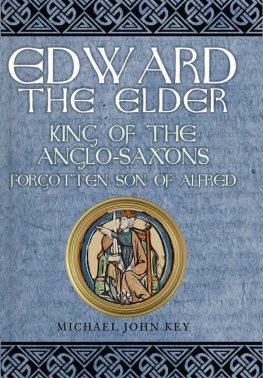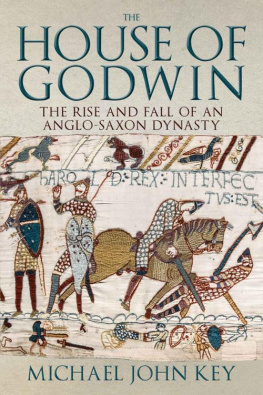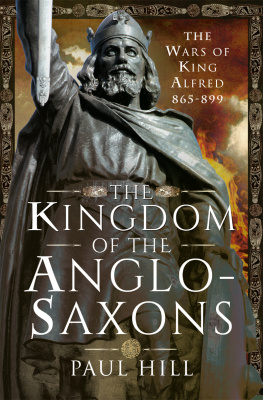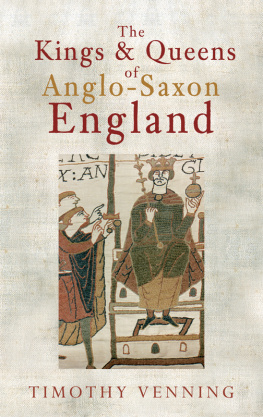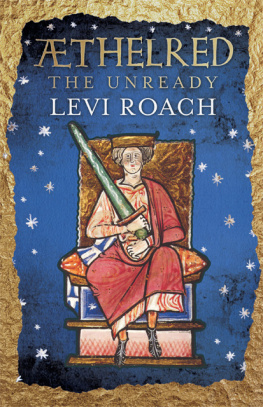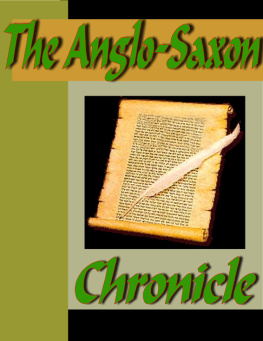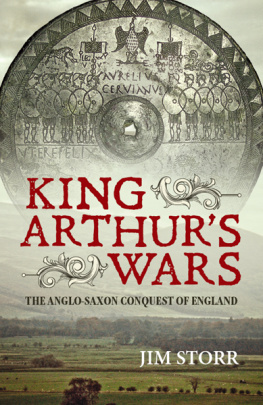Acknowledgements
As a general acknowledgement, I would like to thank all those academics and historians who have provided information and inspiration within their own research, textbooks and articles towards my own research and provided me with the added enthusiasm to complete the project. They are too numerous to mention here, but they and their works are all named in the bibliography.
However, if one secondary source must be singled out, thanks should be given to those responsible for maintaining the Prosopography of Anglo-Saxon England database, which has been invaluable regarding the charter detail.
I would like to acknowledge the following people and organisations for their assistance in providing information, and where appropriate, approval to use photographs, images and maps in this work. My thanks go to Simon Keynes at the University of Cambridge, Katie Tucker at the University of Winchester, Katherine Barclay and Clare Clarkson at Winchester Excavations Committee, Sam Butcher at the Hampshire Cultural Trust, Steve Marper from Hyde900, and Jo Bartholomew at Winchester Cathedral for their help and co-operation. I would also like to thank Shaun Barrington, Jonathan Jackson, Nikki Embery and Cathy Stagg at Amberley Publishing for supporting the premise and for their help and advice and seeing the project through to fruition.
Last but not least, I would like to give a special mention to my partner Alice, for without her support and patience this book would not have been realised.
Maps and Tables
Some Introductory Notes
The following notes are intended to introduce the reader to some aspects of tenth-century England and provide some explanations or information for some of the rules adopted in the main text.
To simplify the geographical and political setting in the early tenth century the term Anglo-Saxon refers to the populations of the old kingdoms of Wessex, Mercia, East Anglia and Northumbria. The latter kingdom can be divided into two regions at the River Tees, Bernicia and Deira, and these names are occasionally used in the text. Bernicia lay north of the Tees up to the Firth of Forth, and Deira lay south of the Tees down to the River Humber. Political union between Bernicia and Deira had broken after 865, with the Danes controlling Deira and much of Bernicia by 880. Likewise, by that year, half of Mercia and all of East Anglia was under Scandinavian control. When Edward the Elder took the throne of Wessex in 899, his father had already recovered all previously lost West Saxon territory except for Essex. At the turn of the tenth century Anglo-Saxons controlled Wessex, half of the former kingdom of Mercia, and part of Bernician Northumbria. The Danes and Norse held the rest.
The term Viking is primarily describing Scandinavian sea raiders or pirates but it has been used occasionally in the text to describe the Danish or Norse raiding armies before they began to settle in England. Most Vikings, but not exclusively, originated from Denmark, Norway and Frisia. The settlers in the north were mixed, but Scandinavian settlers in the Danelaw (eastern Mercia) and East Anglia were primarily Danish. For this text the terms Viking, Dane, Norse or Scandinavian have often been interchanged, but as Edwards career concerned significant interaction with the Danish settlers of East Anglia and the Danelaw the use of either Dane or Scandinavian has been considered more appropriate in most cases.
It is useful for Edward the Elders period to differentiate between Anglo-Saxon or English territory, compared to the Scandinavian-controlled territory of Deira and the occupied Scandinavian regions of East Anglia and the Danelaw. Reference to England (from the Old English Englaland, meaning land of the English) is used generically only in the context of later national boundaries and identity because it did not exist as such during the reign of Edward the Elder. Regional and ethnic borders also differed. The early tenth-century border of Anglo-Saxon Northumbria lay on the Firth of Forth not the River Tweed, and Wessex stopped at the River Tamar not Lands End. The Anglo-Saxon Mercian border with Wales followed generally along the line of Offas Dyke. Cumbria, until the ninth century part of Northumbria, was later controlled variously by Norse Vikings and the kingdom of Strathclyde; the region now known as Lancashire, in general terms, was contested territory between Strathclyde, a combination of Scandinavians and, as the tenth century progressed, the English.
A brief comment should be made on the topography of England during the medieval period as it is relevant to how kingdoms and kings interacted. The coast along some parts of Yorkshire, East Anglia and Sussex has changed dramatically in the last thousand years due to coastal erosion and material deposition. Although trees covered only slightly more land than today, several large ancient woodlands restricted easy movement through them. These included the Andredsweald (Kent and Sussex), Epping (Essex to Buckinghamshire), Savernake (Berkshire and Wiltshire), Penselwood (east Somerset and Wiltshire), Cannock, Arden and Sherwood (north Midlands) and Elmet (south Yorkshire). Between some of them, large areas of heath or scrubland further restricted easy movement. The higher water table, lack of drainage and rudimentary land management encouraged large expanses of inland marsh, prone to flooding. The largest areas dominated by lying water included the Somerset Levels, the Fens in a wide arc south of The Wash, and the regions that lay either side of the Humber Estuary and its major tributaries. Rivers acted as important arteries into the centre of the country, and relatively small rivers today were much wider, deeper and more significant for trade or as natural barriers during the medieval period. There were few significant bridges anywhere and most major rivers were crossed by selected fording points that had been in use since the Roman period. These natural features should be borne in mind when considering the difficulties involved in travelling across country in the tenth century alongside, in Edwards case, the logistics involved in moving armies through the natural landscape.
The text includes frequent reference to and on occasion direct quotes from key primary source texts relating to the period, including the Anglo-Saxon Chronicle (ASC) and the works of William of Malmesbury and John of Worcester, among others. Detail and opinion from many secondary sources have also been utilised where appropriate and have been duly acknowledged and identified within the reference notes. However, it was decided not to include reference to individual scholars in the main body of text, as commonly seen in academic studies, to permit the flow of text appropriate to a popular history. Individual charter numbers are not included in the text but are referenced within the endnotes, and it will be seen that they are all prefixed by the letter S. This refers to the comprehensive cataloguing system for Anglo-Saxon charters first applied by Professor Peter Sawyer in his Anglo-Saxon Charters: An Annotated List and Bibliography, first published by the Royal Historical Society in 1968.
The Anglo-Saxon Chronicle scribes sometimes used different methods to calculate the calendar, which presents obvious anomalies. Several systems to define the beginning of the year other than 1 January were adopted, most based around important Christian festivals. The first of these alternate dates was the Annunciation on 25 March, the date that the Christian Church believed the angel Gabriel told Mary of her conception. The second was the indiction, the date in the Roman world that property was assessed for tax, which in Rome and Byzantium fell on 1 September and 24 September. Another was the birth of Christ on 25 December using the Old English Metrical Calendar. The 1 January date was the Feast of the Circumcision, the date most commonly used as the year beginning in Roman civil custom. All of this has meant that some given years quoted in some original texts are wrong, in that they do not correlate to the twelve-month cycle from 1 January to 31 December. Some events that occurred between September and the end of December were placed into the following year. Contrarily, some events before 25 March became part of the previous year. Fortunately, scholars have addressed these anomalies in almost all disputed cases. Where year entries for recorded events are given in this text, they have been converted for consistency to the contemporary twelve-month calendar beginning 1 January.

